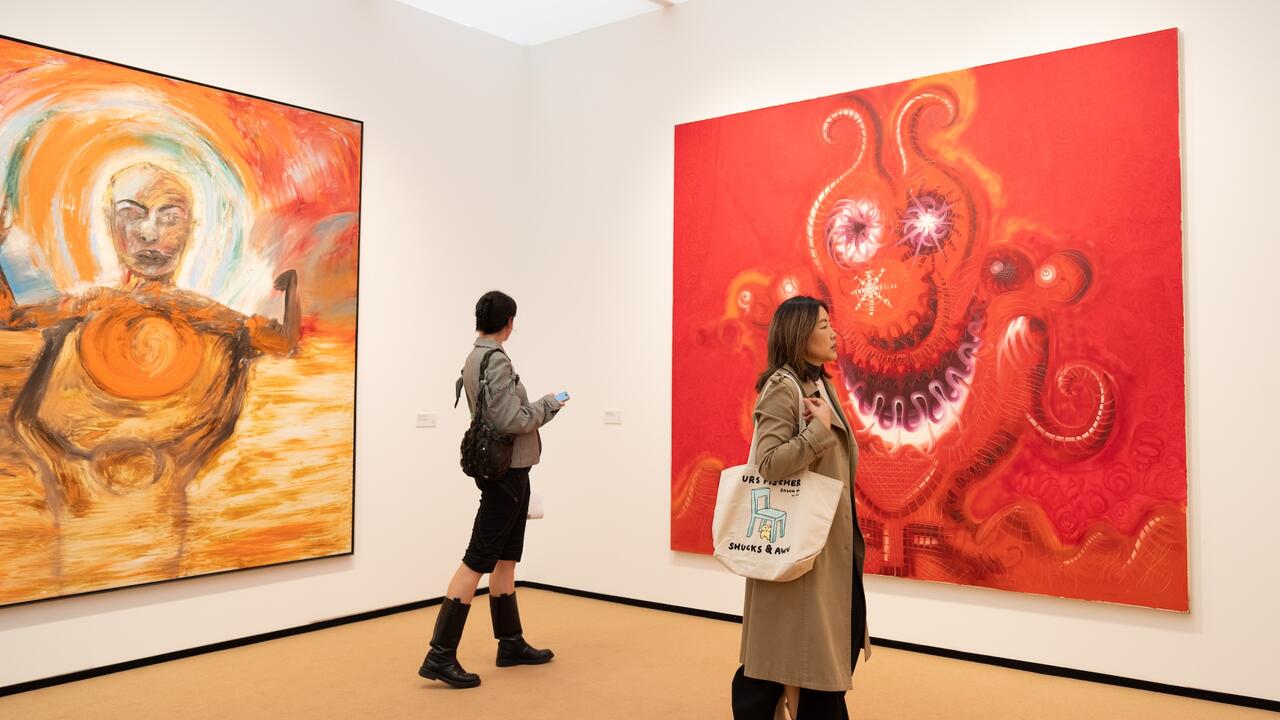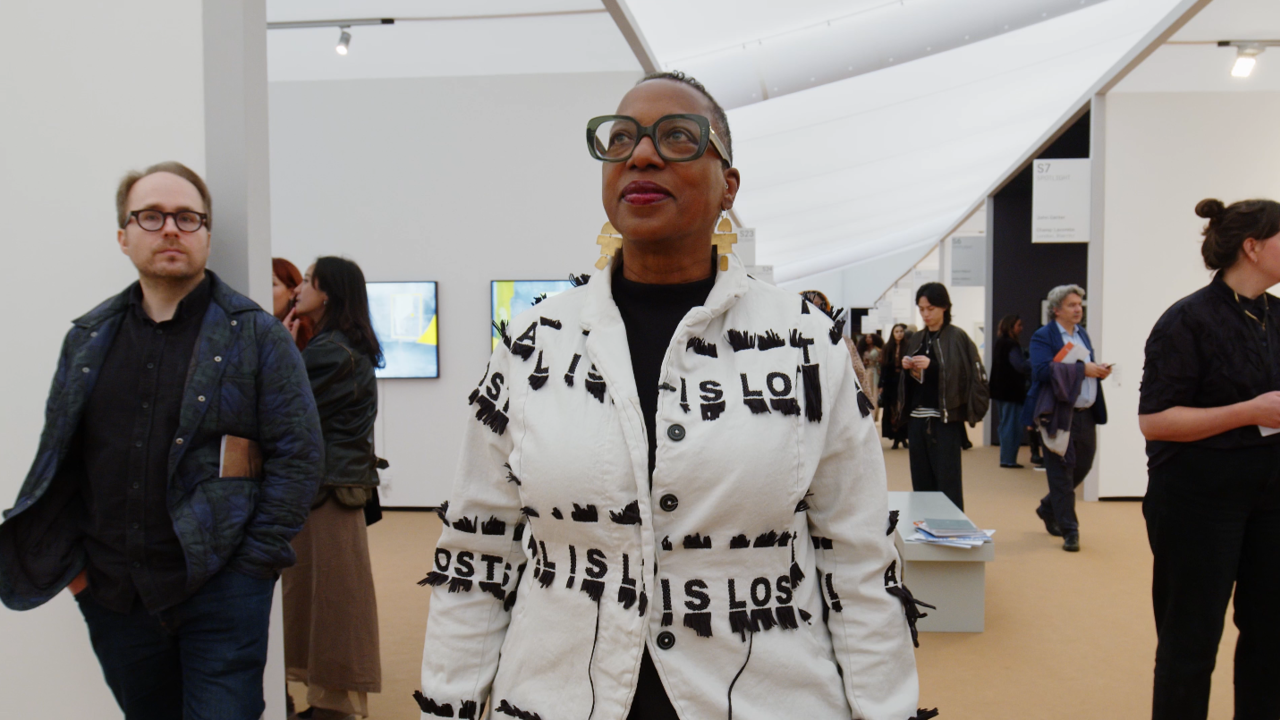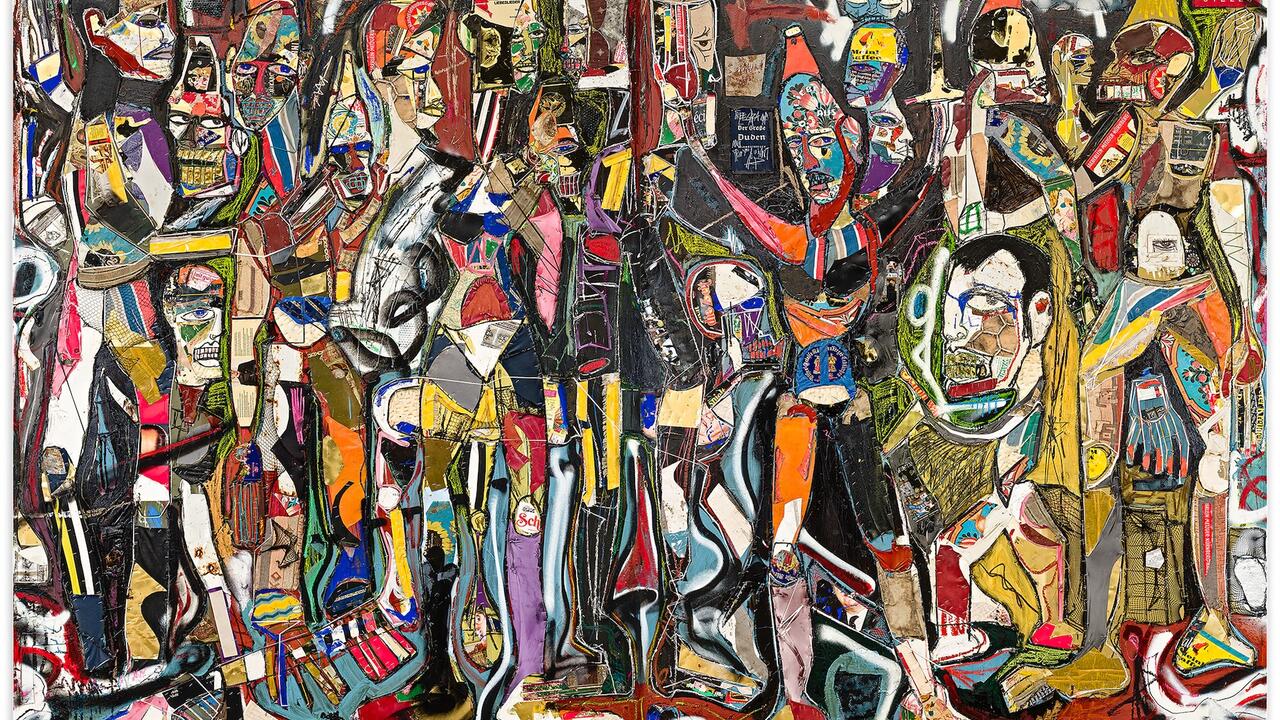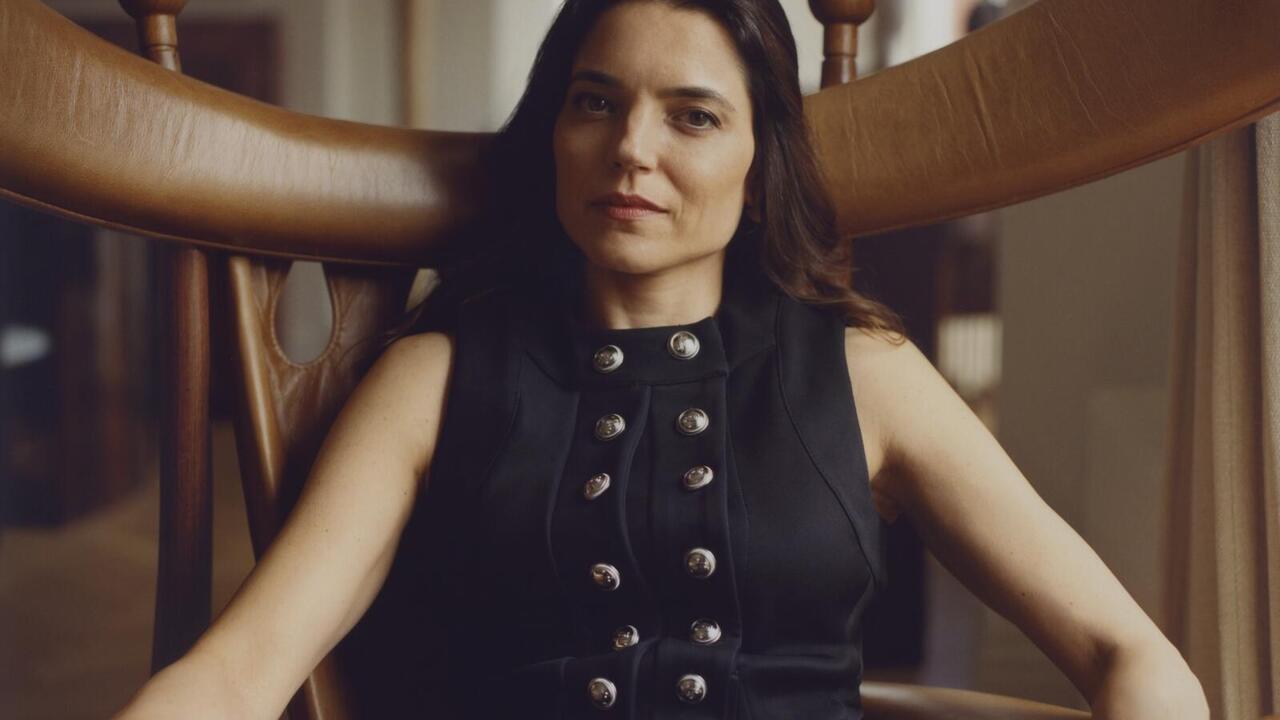Wilhelm Sasnal
Hauser & Wirth, Zürich, Switzerland
Hauser & Wirth, Zürich, Switzerland

Wilhelm Sasnal’s paintings and drawings often project a decidedly cinematic character that recalls film stills or individual frames of a cartoon. The Polish artist’s emphasis on framing bits of action or non-action provokes the feeling that the viewer is often peering into one of his works as though it were a television monitor, with all the clarity that implies. Though these aspects of Sasnal’s work point to the photographic source material that he often relies on, it’s unsurprising that he has finally undertaken a feature film of his own. That film, S´winiopas (Swineherd, 2008), an elliptical rendering of the perverse Hans Christian Andersen fable ‘The Swineherd’ (1842), along with a recent series of related paintings and drawings, comprised Sasnal’s oddly moving show at Hauser & Wirth.
If Andersen’s tale began with a familiar ‘Once upon a time ...’, Sasnal’s begins with dialogue that is a little less winsome: ‘One word to anyone and I’ll kill you,’ gasps an old farmer to his indolent swineherd, as they hide some sheet metal in a barn’s loft. Time, as in many fairy tales, seems to have stopped: it could be the 1950s or the 2000s. The story that follows is sketched out just as obliquely: the swineherd carries notes between the farmer’s lithe daughter and her lover, a young woman who works in the fields, while an itinerant musician crosses all of their paths to some harm. The musician’s outsider status, his scapegoating and his tragic end, recall the archetype of the wandering Jew, which – along with a surreal scene in which a series of swastika-emblazoned dinner plates are fished out of a pond – adds a political resonance to the film.
The swineherd’s scenes and the beautiful cinematography by Sasnal and Aleksander Trafas evoke another film of pastoral horrors with an animal at its centre: Robert Bresson’s Au hasard Balthazar (1966), with its ever-savaged donkey. Nevertheless, the poverty and misery is more straightforward in Sasnal’s film, and the charged imagery more radical as well: an image of a movie camera being dragged through the streets like a man; a night-time party of drunken revelry in the fields where violence is weirdly portended; and the torture of the musician. A surprising montage toward the end of the film, which self-consciously and symbolically brings the story abruptly into the present day, with footage of rowdy young men at a Polish technical school that the artist himself attended, is evidence that Sasnal has not quite bought into conventional cinematic modes. His work remains a mixtape of Postmodern art histories, street savvy, awareness of recent political realities and a remarkable instinct for clean, coherent design.
Just as coherent and seemingly effortless was the way in which Sasnal’s paintings and drawings worked with and against S´winiopas. Even without the film, this would have been an impressive show, but S´winiopas added a welcome tension to paintings that can sometimes go down a little too easily. Many of them were sparse landscapes punctuated with the detritus of industry or agriculture. Particularly impressive were the larger oil paintings that didn’t hew to imagery taken from S´winiopas: Clothes (2009), for example, an ominously windswept landscape in green and black, is flat and childlike but for a few splotches of white, blue and red un-worked paint that stand out – sadly, deftly – against the flat speed of the canvas. A more complicated painting, Untitled (2009), with its lucid black wheels stranded on an abstracted beach of blue and white horizontal planes, was also a highlight. More conscious imagery from the film abounded: a concrete mixer and a solitary oil derrick in shadow; a long, hand-painted billboard on paper that advertised the film in a cartoon-y, Socialist Realist style. All of the paintings, along with the film that accompanied them, share Sasnal’s proclivity for indirect, ambiguous imagery and mysteriously pointed narratives, as well as elegantly fluent execution – itself both the attraction and the warning.




















